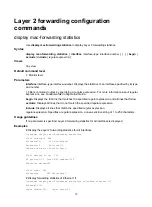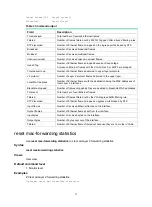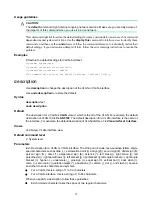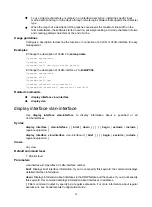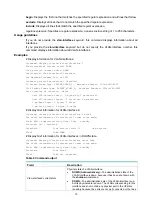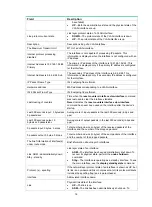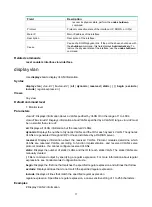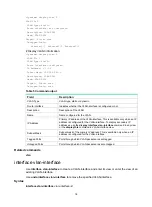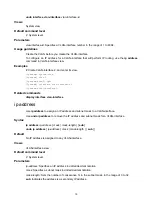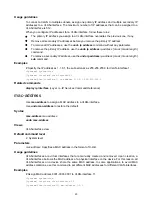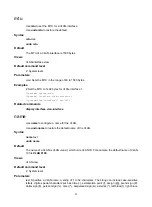
23
Use
undo shutdown
to cancel the action of shutting down a VLAN-interface.
Syntax
shutdown
undo shutdown
Default
A VLAN-interface is not manually shut down. The VLAN-interface is up if one or more ports in the
VLAN is up, and goes down if all ports in the VLAN go down.
Views
VLAN-interface view
Default command level
2: System level
Usage guidelines
A VLAN-interface shut down with the
shutdown
command is in DOWN (Administratively) state until
you bring it up, regardless of how the state of the ports in the VLAN changes.
Before configuring parameters for a VLAN-interface, shut down the VLAN-interface with the
shutdown
command to prevent the configurations from affecting the network. Use the
undo
shutdown
command to bring up a VLAN-interface after you have configured related parameters and
protocols for the VLAN-interface.
You can shut down a failed interface with the
shutdown
command and then bring it up with the
undo
shutdown
command to see if it recovers.
In a VLAN, the state of any Ethernet port is independent of the state of the VLAN-interface.
Examples
# Shut down VLAN-interface 2, and then cancel the action of shutting it down.
<Sysname> system-view
[Sysname] interface vlan-interface 2
[Sysname-Vlan-interface2] shutdown
[Sysname-Vlan-interface2] undo shutdown
vlan
Use
vlan vlan-id
to create a VLAN and enter its view or enter the view of an existing VLAN.
Use
vlan
vlan-id1 to vlan-id2
to create VLANs
vlan-id1
through
vlan-id2
, except reserved VLANs.
Use
vlan all
to create VLANs 1 through 4094.
Use
undo vlan
to remove the specified VLANs.
Syntax
vlan
{
vlan-id1
[
to vlan-id2
]
|
all
}
undo vlan
{
vlan-id1
[
to vlan-id2
]
|
all
}
Default
Only the default VLAN (VLAN 1) exists in the system.
Views
System view


